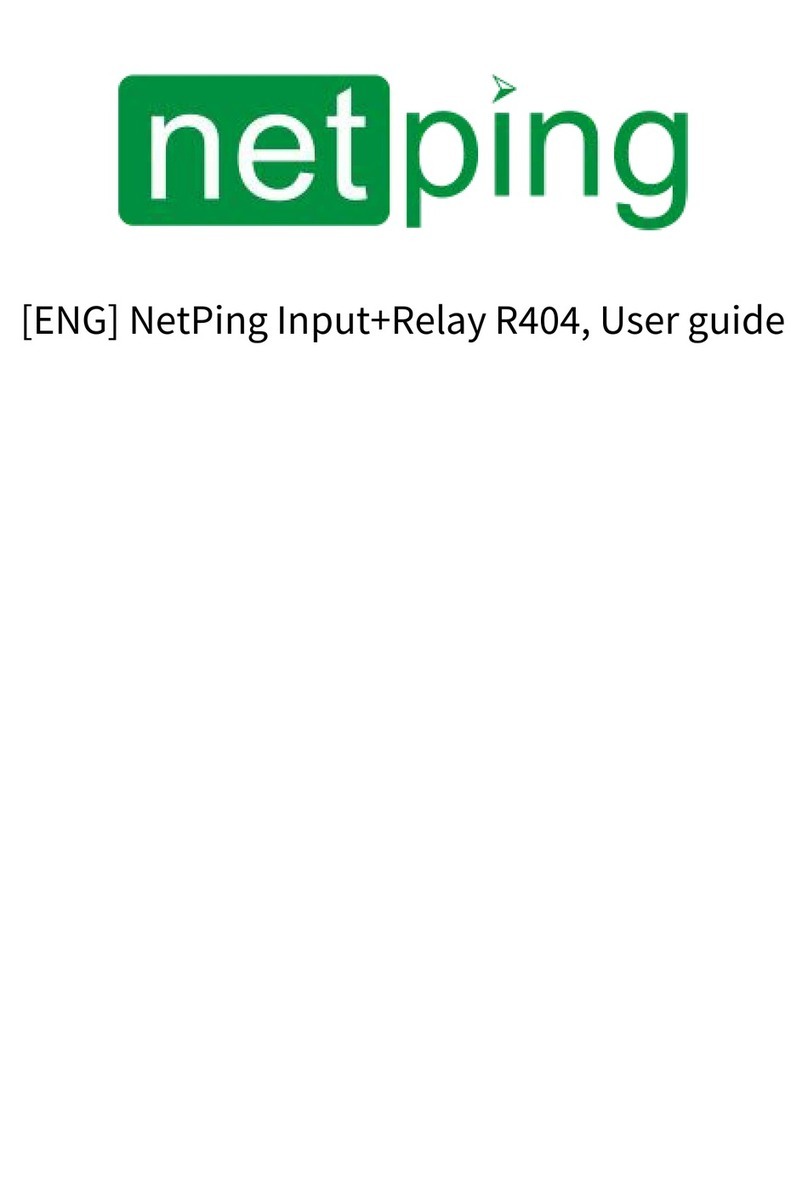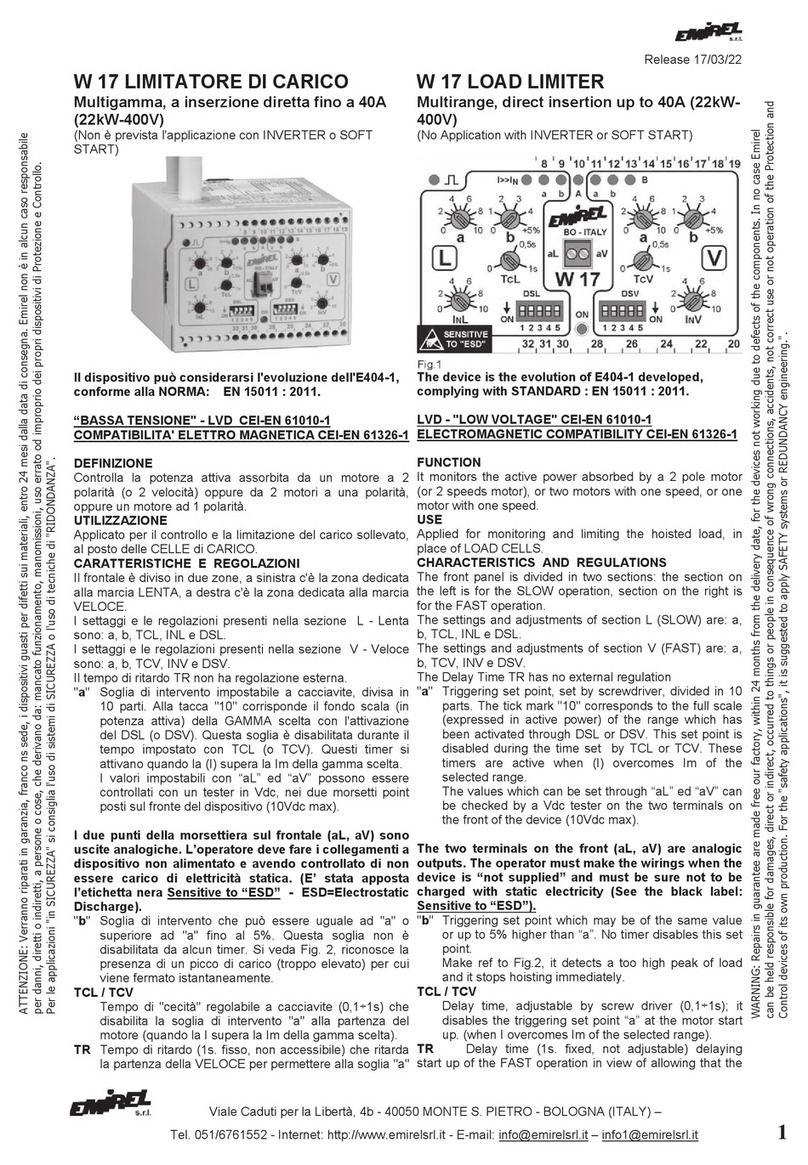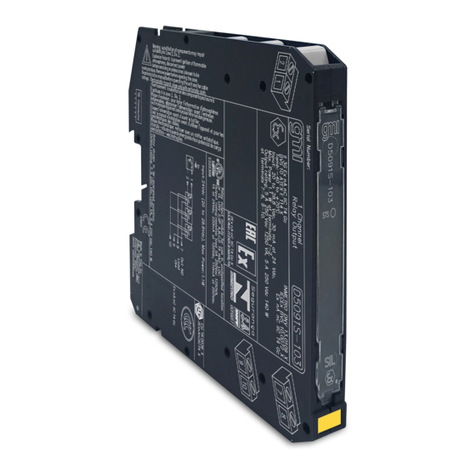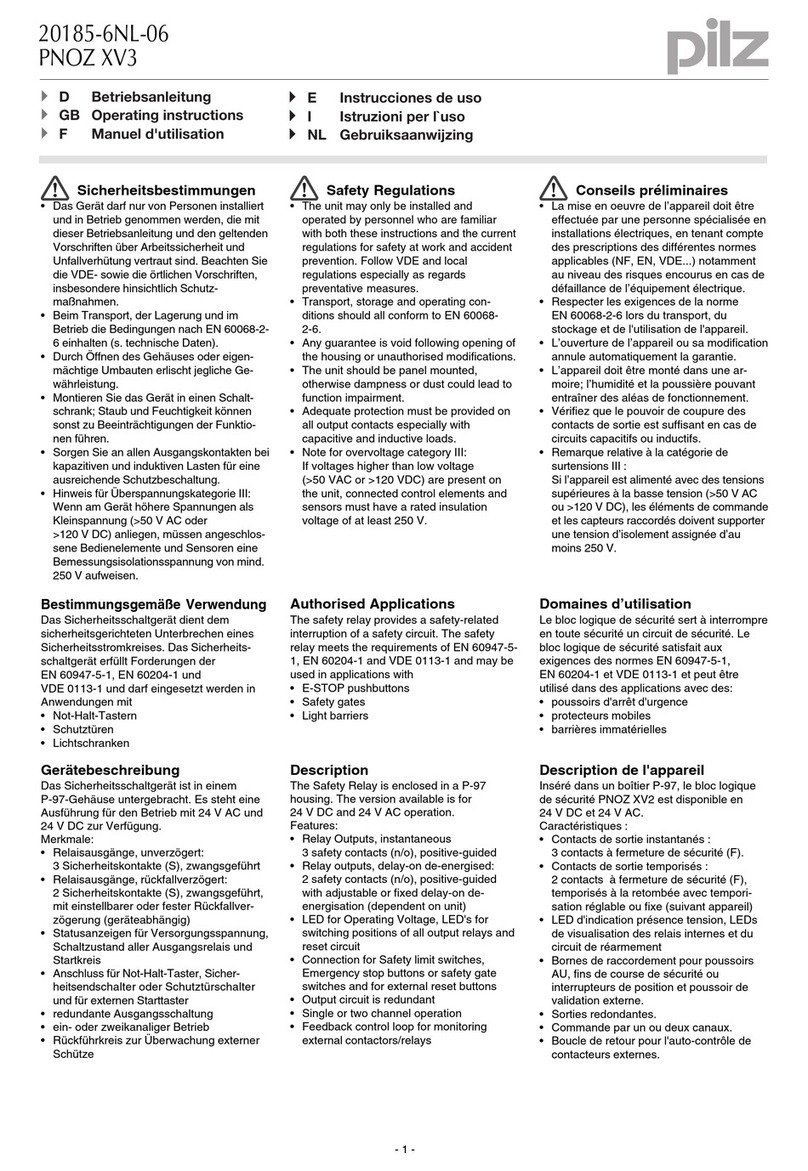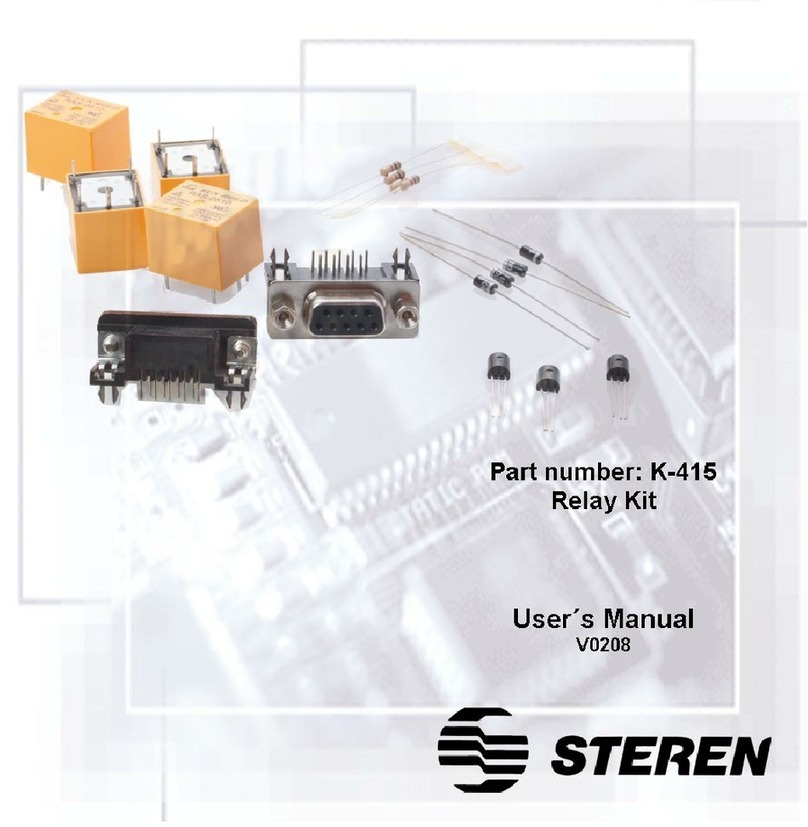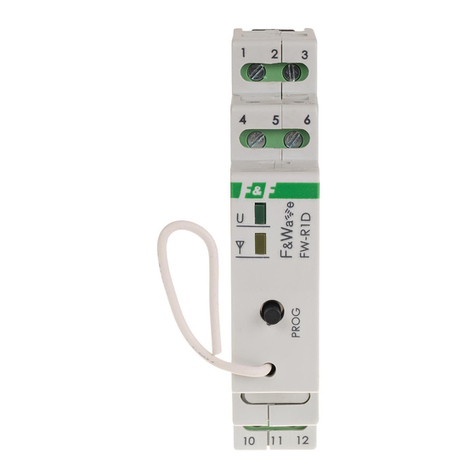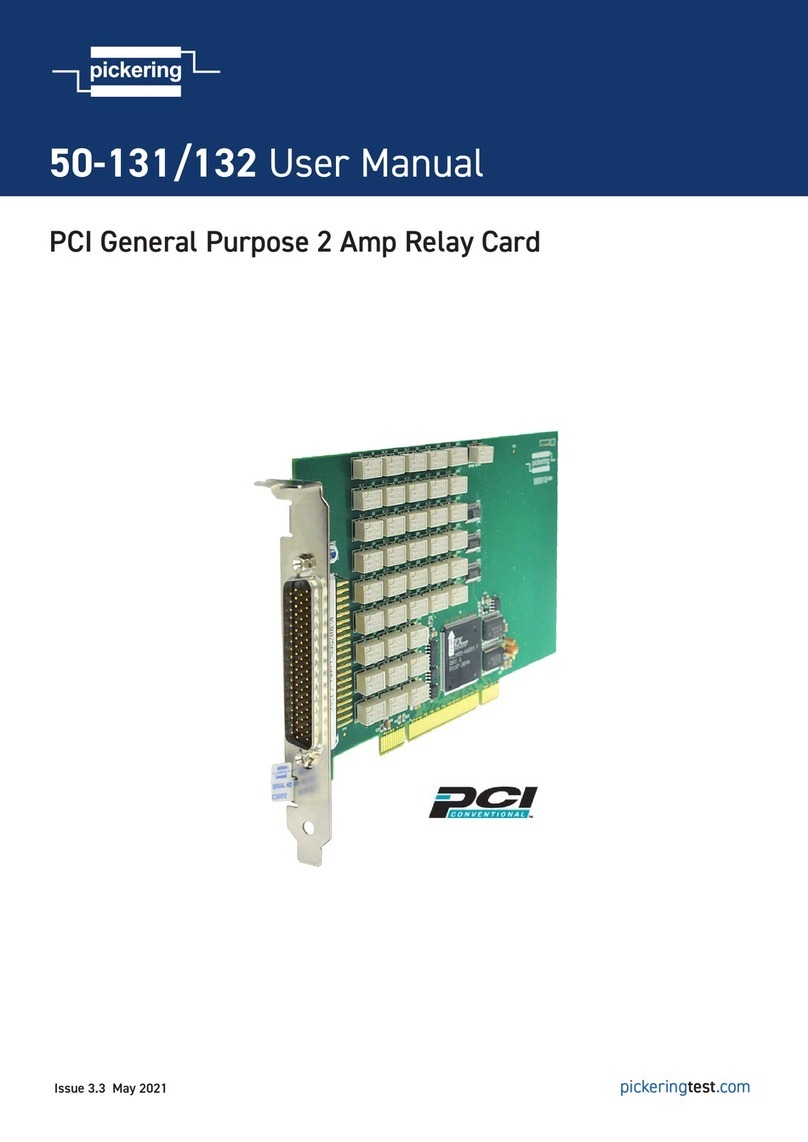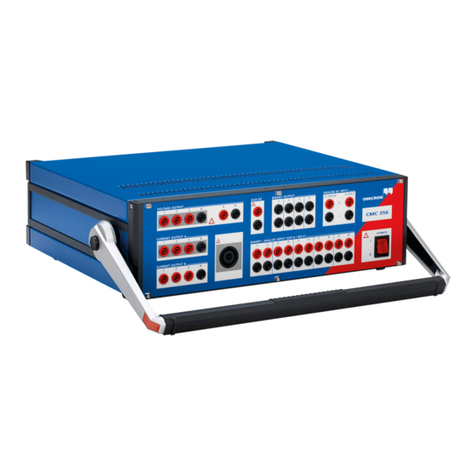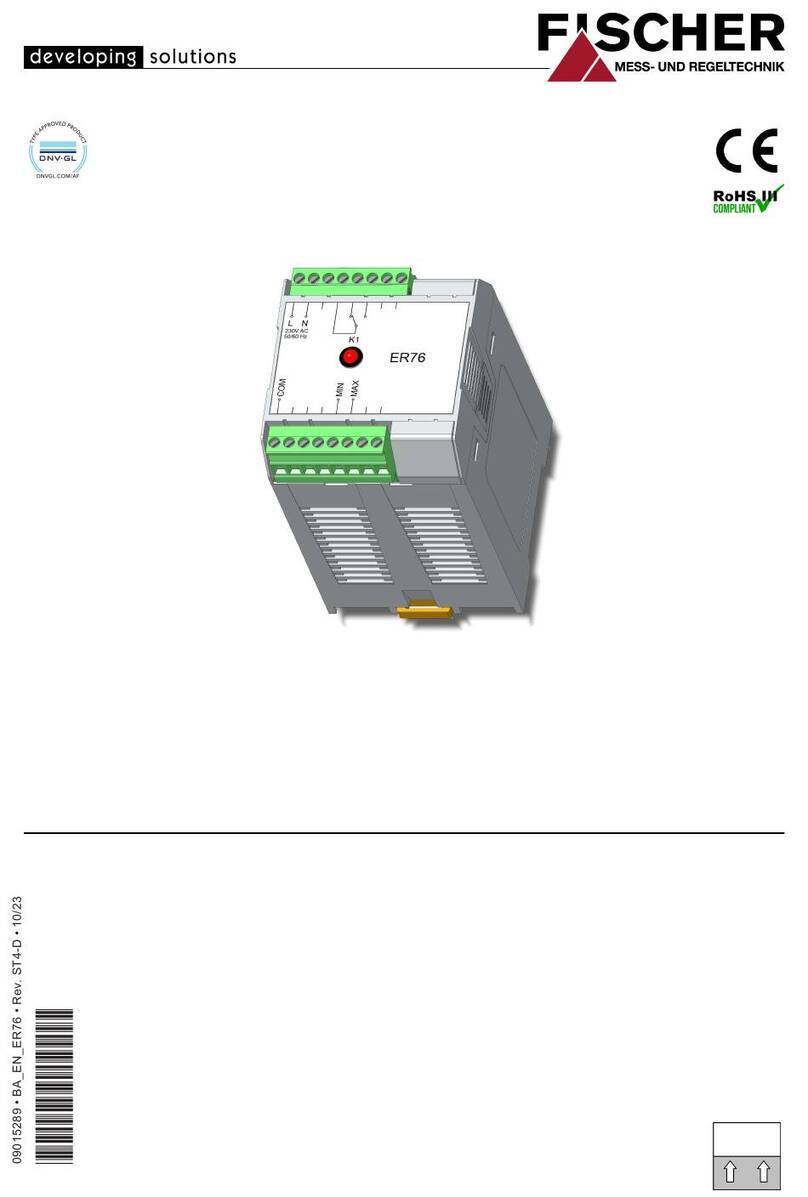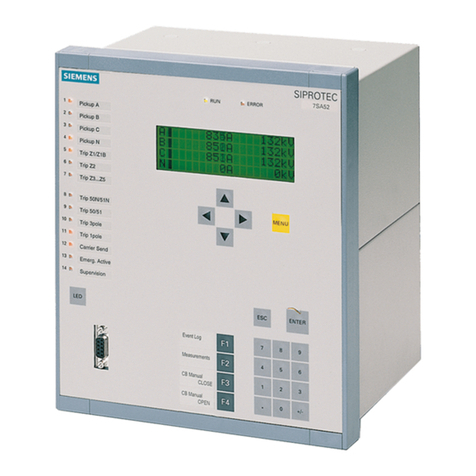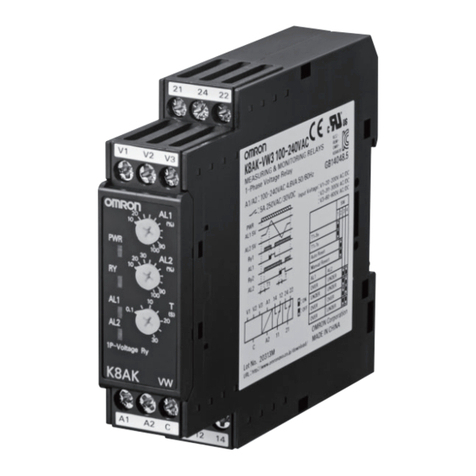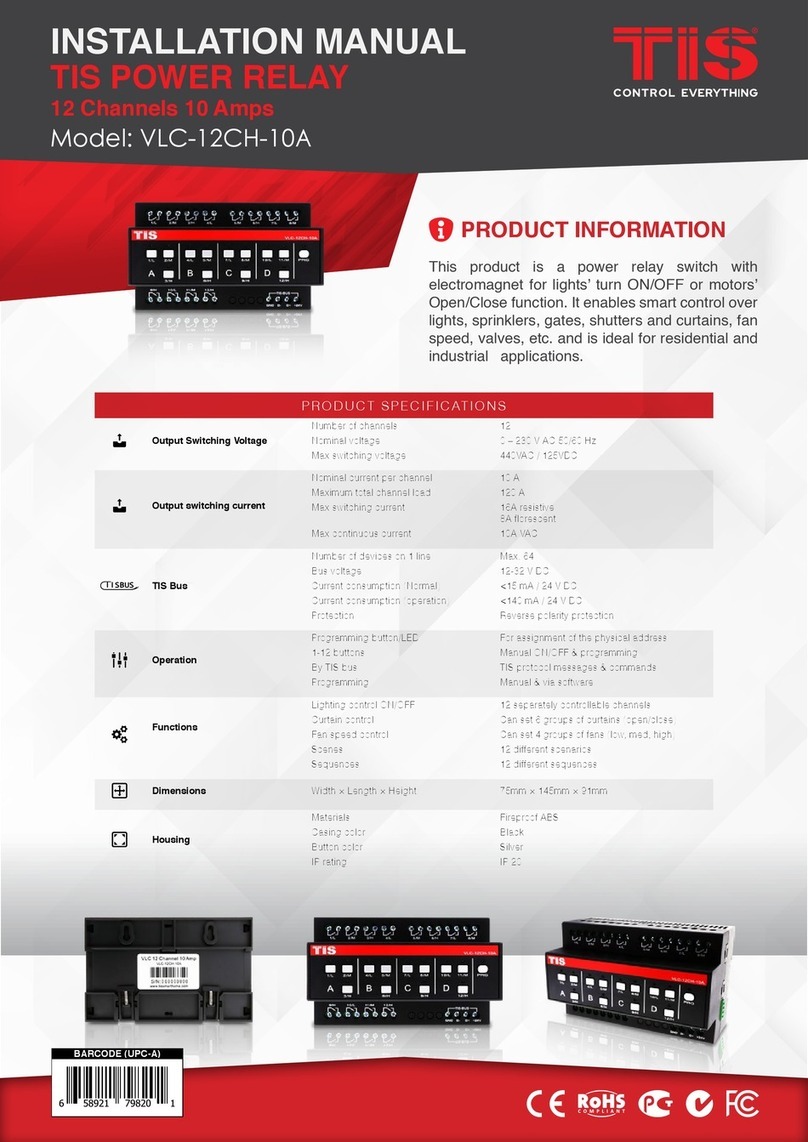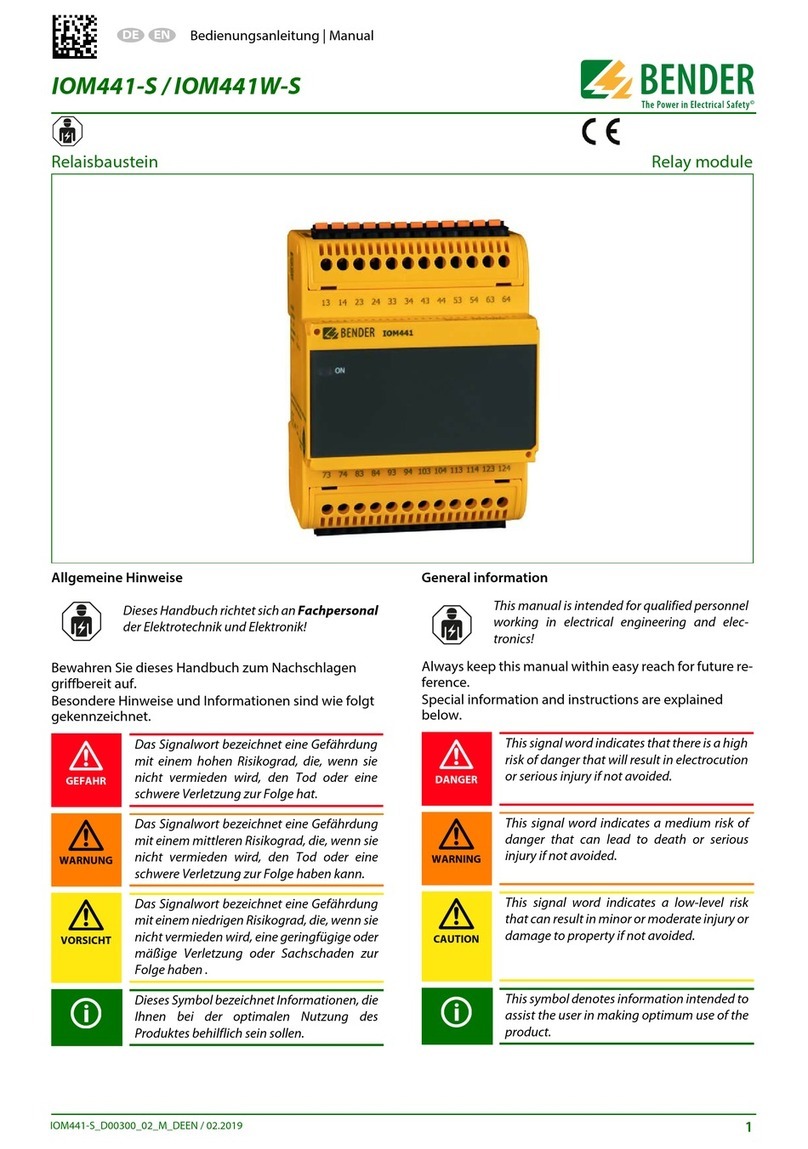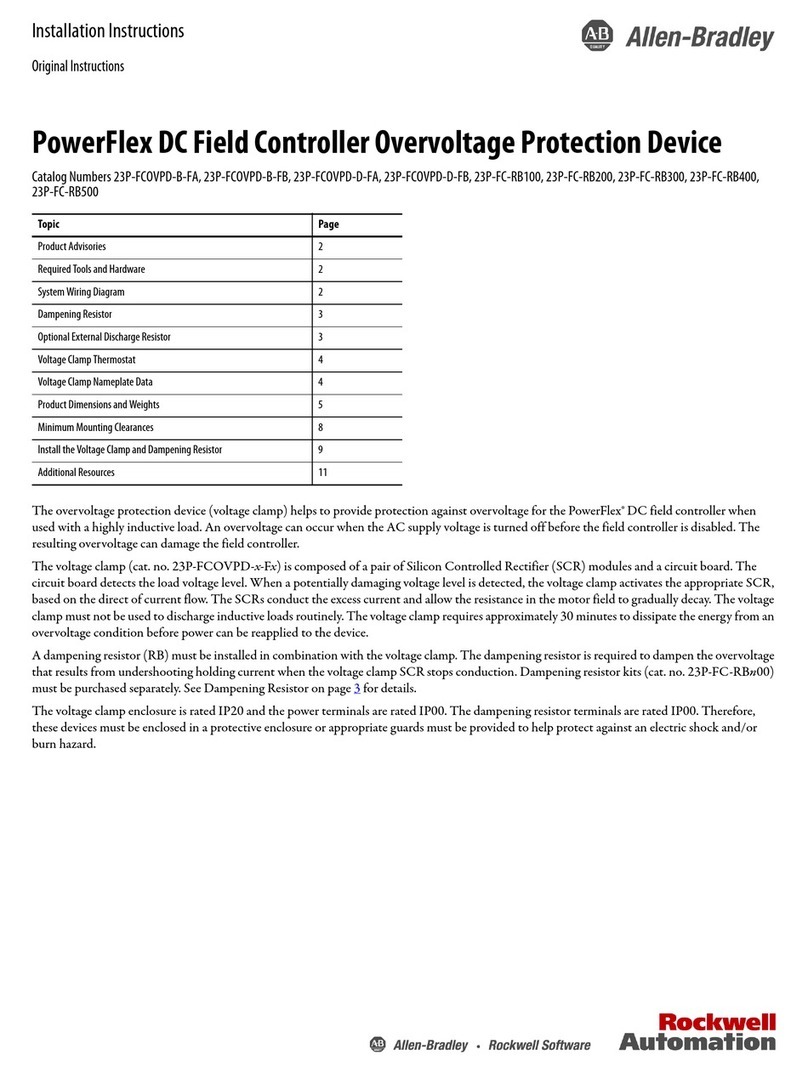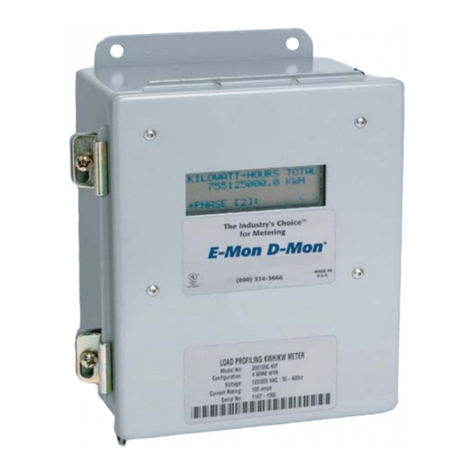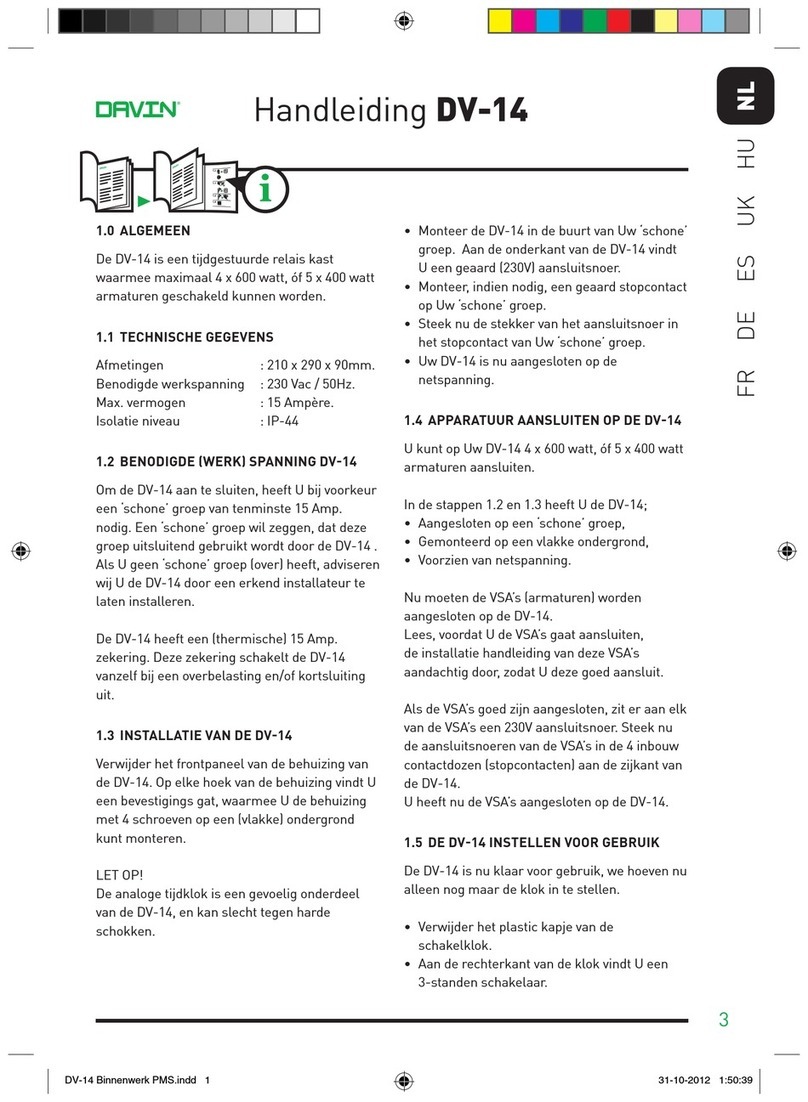NetPing 254R304 User manual

[ENG] NetPing Input+Relay 254R304, User Guide

[ENG] NetPing Input+Relay 254R304, User Guide -
2
Содержание
[ENG] [Input+Relay 254R304] 1. Introduction............................................................ 4
[ENG] [Input+Relay 254R304] 2. Limitation of Liability and Copyright .................... 5
Limitation fo Liability and Copyright ................................................................................................ 5
[ENG] [Input+Relay 254R304] 3. Connectors and Indication Elements.................... 6
The Front Panel.................................................................................................................................. 6
The Back Panel................................................................................................................................... 7
The Side Panel.................................................................................................................................... 7
[ENG] [Input+Relay 254R304] 4. Installation and Connection .................................. 9
[ENG] [Input+Relay 254R304] 5. Connection of the External Sensors and Executive
Devices....................................................................................................................... 11
Sensors and devices of the 1-wire model range............................................................................. 11
Sensors of the "dry contact" type ................................................................................................... 11
Sensors with two wires .................................................................................................................................................... 11
Liquid sensor (mod.2605) ................................................................................................................................................ 11
PIR detector (mod.M105-1E)............................................................................................................................................ 13
Executive devices............................................................................................................................. 14
Buzzer (mod.STD-3025) ................................................................................................................................................... 14
NetPing AC/DIN socket .................................................................................................................................................... 15
[ENG] [Input+Relay 254R304] 6. Electrical Parameters of the Input Lines............. 17
Electrical parameters of the input lines:......................................................................................... 17
Equivalent circuit ............................................................................................................................. 17
[ENG] [Input+Relay 254R304] 7. Resetting Settings to Default Values ................... 18
[ENG] [Input+Relay 254R304] 8. PoE Technology.................................................... 19
[ENG] [Input+Relay 254R304] 9. Additional Documents and Links ........................ 20
[ENG] [Input+Relay 254R304] 10. Warranty Obligations ......................................... 21
[ENG] [Input+Relay 254R304] 11. Operation Conditions and Storage ................... 22

[ENG] NetPing Input+Relay 254R304, User Guide -
–

[ENG] NetPing Input+Relay 254R304, User Guide -[ENG] [Input+Relay 254R304] 1. Introduction
[ENG] [Input+Relay 254R304] 1. Introduction
–
•
•
•
[ENG] [Input+Relay 254R304] 1. Introduction
This guide will help you get acquainted with the specialities and features of the NetPing Input+Relay 254R304,get
an idea of its functionality and technical characteristics and prepare the device for operation.
This User Guide is designed for network administrators and users, who set up or operate the device. To work with
the device properly, a user must have an idea about the principles of building and functioning of local networks as
well as possess the next knowledge and skills:
Basic knowledge in the area of local and global networks;
Basicknowledgeintheareaofarchitectureandprinciples of work of TCP/IP networks;
Basic knowledge in the area of architecture and principles of work of Ethernet networks.

[ENG] NetPing Input+Relay 254R304, User Guide -[ENG] [Input+Relay 254R304] 2. Limitation of Liability and Copyright
[ENG] [Input+Relay 254R304] 2. Limitation of Liability and Copyright
–
[ENG] [Input+Relay 254R304] 2. Limitation of Liability and
Copyright
Limitation fo Liability and Copyright
The information, contained in this document, can be changed by a manufacturer without a prior notice. Although
every effort was made to make the information in this document accurate and without errors, the manufacturer is
not liable for their possible presence and for the consequences that may result from the errors herein. The
manufacturer is not liable if supplied equipment, software and this user guide does not correspond to expectations
of a user and his/her opinion about where and how to use all the above. All copyrights on supplied devices,
described in this User Guide, as well as firmware and software of devices and this User Guide belong to NetPing
global Ltd. Сopying, replication and translation of this user guide to other languages are not allowed without a
prior written permission of a rightholder. Copying, replication, changing, disassembling of provided softwareare
not allowed without a prior written permission of a rightholder.For the part of software that is provided in source
codes, there is a separate license agreement, which defines an order of its use and modification. Other trademarks
used in this description belong to corresponding rightholders.

[ENG] NetPing Input+Relay 254R304, User Guide -[ENG] [Input+Relay 254R304] 3. Connectors and Indication Elements
[ENG] [Input+Relay 254R304] 3. Connectors and Indication Elements
–
[ENG] [Input+Relay 254R304] 3. Connectors and Indication
Elements
The Front Panel
Element Function
Connector for external battery pack A connector which is used to connect the external battery pack
DC in A connector which is used to connect 12V power
RESET A button which resets the settings to the factory ones
PWR Led A LED to indicate the operation of the device
Power Class switch A power class switch — a class 3 for IEEE 802.3af (PD 13W) and a
class 4 for IEEE 802.3at (PD 25.5W)
Eth PoE in Ethernet 10/100/1000 BASE-TX PoE in connector
Eth PoE out Ethernet 10/100/1000 BASE-TX PoE out connector of the IEEE
802.3af / 802.3at standard without the function of determining a
compatible PoE device
It is forbidden to power the device from both 12V adapter and PoE simultaneously.

[ENG] NetPing Input+Relay 254R304, User Guide -[ENG] [Input+Relay 254R304] 3. Connectors and Indication Elements
[ENG] [Input+Relay 254R304] 3. Connectors and Indication Elements
–
The Back Panel
Element Function
1W port The port terminals for connecting 1 wire sensors. Each 1-wire
terminal has its own output stage and does not depend on the length
of the wires connected to another 1-wire terminal.
Input lines Input line terminals for connecting external sensors of a "dry
contact" type (input resistance 4.7 kOhm). They also work as
impulse counters 12V and support the connection of impulse
counters. The readings of each input are stored in non-volatile
memory.
+5V, +12V and GND terminals +5V (250mА), +12V (250mA), GND terminals are used to power
external sensors and devices.
The Side Panel

[ENG] NetPing Input+Relay 254R304, User Guide -[ENG] [Input+Relay 254R304] 3. Connectors and Indication Elements
[ENG] [Input+Relay 254R304] 3. Connectors and Indication Elements
–
Element Function
Built-in relay operation
indicators
4 LEDs for indication of the built-in relay operation
Built-in relay terminals The teminals for built-in relays (two-way contact NO-N-NC), up to 24V current up
to 500mA

[ENG] NetPing Input+Relay 254R304, User Guide -[ENG] [Input+Relay 254R304] 4. Installation and Connection
[ENG] [Input+Relay 254R304] 4. Installation and Connection
–
[ENG] [Input+Relay 254R304] 4. Installation and Connection
In order to connect the device, follow these steps:
1. Remove the device from its packaging and mount it onto the place you need (or into DIN rail);
2. Connect the devices which you need (see «[ENG] [Input+Relay 254R304] 5. Connection of the External Sensors
and Executive Devices» section).
3. Power the device from a 12V power supply and connect it to the local network. IP address 192.168.0.11 was set by
default. Fot the initial setting of the device make sure that the address of your computer is located in the same IP-
subnet as the address of the device. For example, the address which is set on the computer can be 192.168.0.11
mask 255.255.255.0.
4. For the initial configuration of the device parameters using the web-interface, make sure that the device
responds to the ping command at its IP address.
It is forbidden to power the device from both 12V adapter and PoE simultaneously.

[ENG] NetPing Input+Relay 254R304, User Guide -[ENG] [Input+Relay 254R304] 4. Installation and Connection
[ENG] [Input+Relay 254R304] 4. Installation and Connection
–
•
•
5. In order to configure the device, open the web-interface of the device using this addresshttp://192.168.0.100with
the help of a browser (it is recommendable to use the latest version of Google Chrome). In order to authorize, use:
Login:visor
Password:ping
Further configuration of the device is carried out in the web-interface of the device.
Attention! The description of the web-interface can be found in a separate documentDKSF 561.X IU,where X —
the number of a firmware version of the device, which description you use.

[ENG] NetPing Input+Relay 254R304, User Guide -[ENG] [Input+Relay 254R304] 5. Connection of the External Sensors and
Executive Devices
[ENG] [Input+Relay 254R304] 5. Connection of the External Sensors and Executive Devices
–
•
•
•
•
•
•
•
[ENG] [Input+Relay 254R304] 5. Connection of the External
Sensors and Executive Devices
Sensors and devices of the 1-wire model range
The sensors of the 1-Wire model range are connected with 1-wire plugs RJ12 with the possibility to use extension
cords and splitters. The maximum loop length of 1-wire network, connected to one connector is restricted to 50
meters. It is possible to connect up to 2 temperature sensors and 2 humidity sensors in total at the same time.
To the 1-wire sensors belong:
Temperature sensor 1-wire (THS);
Humidity sensor 1-wire (HS)
Sensors of the "dry contact" type
The number of the connected sensors of the "dry contact" type is restricted by free input lines of a device and total
current consumption of the sensors if they need additional power supply.
Sensors with two wires
The sensors or other sources of signal, which do not require additional power or they are powered by the other
power sources and it is isolated from the signal line, are connected to the IN terminals and GND terminals of the
device. The polarity of the connection is not important unless otherwise indicated in the documentation for the
device.
To this type of sensors belong:
Supply Voltage Sensor 995S2
NetPing Supply Voltage Sensor 995S2
Door sensor metal
Airflow sensor + GRID 120 * 120 * 10mm NC
and other.
Liquid sensor (mod.2605)
It is strictly prohibited to connect sensors and external modules to the Netping devices with power on!
The configuration of the device and receiving notifications from the sensors are in the document "Firmwear
description».
If there is not enough factory cable length, you can extend it using ourcables 4 extender, 4mwhich are connected in
sequence into each other, or independently using any wire with a cross section of at least 0,4 mm2.
The maximum permissible length of the cable is 100 meters.
This sensor is not an independent device. it is designed to operated together with a special sensitive cable.

[ENG] NetPing Input+Relay 254R304, User Guide -[ENG] [Input+Relay 254R304] 5. Connection of the External Sensors and
Executive Devices
[ENG] [Input+Relay 254R304] 5. Connection of the External Sensors and Executive Devices
–
•
•
Cable Device terminal
Black GND
Red +5 V
Green One of the IN1...4 lines
The compliance of the log. level and the sensor state:
"1" — norm;
"0" — alarm.
The sensor has two connectors on different sides 6p6c for connecting to the monitoring device and 4p4c for
connecting to the sensitive cable.
When you connect the sensor, you should look at the colour of the heat shrink on the terminal at the end of the
wire.

[ENG] NetPing Input+Relay 254R304, User Guide -[ENG] [Input+Relay 254R304] 5. Connection of the External Sensors and
Executive Devices
[ENG] [Input+Relay 254R304] 5. Connection of the External Sensors and Executive Devices
–
PIR detector (mod.M105-1E)
Cable (coloured) Cable (flat) Terminal
Green Marked (red) wire One of the IN1...4 lines
White The first wire after the marked one GND
Black The second wire after the marked one GND
Red The third wire after the marked one +12 V

[ENG] NetPing Input+Relay 254R304, User Guide -[ENG] [Input+Relay 254R304] 5. Connection of the External Sensors and
Executive Devices
[ENG] [Input+Relay 254R304] 5. Connection of the External Sensors and Executive Devices
–
Executive devices
The number of the connected executive devices is restricted by a free built-in relay of the device and total current
consumption of the devices in an active mode.
If there is not enough factory cable length, you can extend it using ourcables 4 extender, 4mwhich are connected in
sequence into each other, or independently using any wire with a cross section of at least 0,4 mm2.
Buzzer (mod.STD-3025)
Coloured cable Terminal
Black GND
Red НР of one of the 1...4 relays
The maximum permissible length of the cable is 100 meters.

[ENG] NetPing Input+Relay 254R304, User Guide -[ENG] [Input+Relay 254R304] 5. Connection of the External Sensors and
Executive Devices
[ENG] [Input+Relay 254R304] 5. Connection of the External Sensors and Executive Devices
–
Coloured cable Terminal
+12V ↔Middle contact of one of the 1...4 relays
NetPing AC/DIN socket
Coloured
cable Клемма
Red +5V
Black GND
Green (dark
blue)
NO-contact of one of the 1...4 relays
+5V ↔Middle contact of one of the 1...4 relays
•
•
Relay «On» — the buzzer is switched on;
Relay «Off» — the buzzer is switched off.
•
•
While connecting NetPing AC/DIN socket to the relay:
Relay «On» — there is no voltage in the socket;
Relay «Off» — there is voltage in the socket.

[ENG] NetPing Input+Relay 254R304, User Guide -[ENG] [Input+Relay 254R304] 5. Connection of the External Sensors and
Executive Devices
[ENG] [Input+Relay 254R304] 5. Connection of the External Sensors and Executive Devices
–

[ENG] NetPing Input+Relay 254R304, User Guide -[ENG] [Input+Relay 254R304] 6. Electrical Parameters of the Input Lines
[ENG] [Input+Relay 254R304] 6. Electrical Parameters of the Input Lines
–
•
•
[ENG] [Input+Relay 254R304] 6. Electrical Parameters of the Input
Lines
Electrical parameters of the input lines:
the voltage of logic «1»: > 8,2 V;
the voltage of logic «0»: < 3,5 V.
Equivalent circuit

[ENG] NetPing Input+Relay 254R304, User Guide -[ENG] [Input+Relay 254R304] 7. Resetting Settings to Default Values
[ENG] [Input+Relay 254R304] 7. Resetting Settings to Default Values
–
•
•
•
•
•
[ENG] [Input+Relay 254R304] 7. Resetting Settings to Default
Values
To reset parameters you have to do following steps:
switch off the power;
press and hold down RESET button (use a pen/stylus/pencil etc.);
switch on the power;
wait for 10 seconds (the CPU indicator will blink);
release the RESET button.
If you do follow the steps successfully, the LED will blink, indicating the reset of the parameters.
After resetting the parameters to the default values, it is necessary to carry out the initial configuration of the
device.
By default, the device has the following parameters:
Username: visor
Password: ping
IP-address: 192.168.0.100
The musl of the subnetwork: 255.255.255.0
Gate: не установлен
SNMPcommunity: SWITCH
MAC-address: 00 a2 xx xx xx xx
Here xx xx xx xx corresponds to the serial number of the device. Thus, all devices after production have unique
MAC addresses.

[ENG] NetPing Input+Relay 254R304, User Guide -[ENG] [Input+Relay 254R304] 8. PoE Technology
[ENG] [Input+Relay 254R304] 8. PoE Technology
–
[ENG] [Input+Relay 254R304] 8. PoE Technology
NetPing Input+Relay 254R304 device has two ports ETH1 and ETH2.
ETH1 (PoE IN) port is located on the front panel of the device and used to supply power to the device using a PoE
injector or other PSE device. You can switch on the power of the devide inselvf from PoE via the web-interface
(switched off by default).
The supply voltage range for the ETH1 port is 12–50 V. The ETH1 port is equipped wth a scheme of compliance
determination with PoE devices of af/at standards. The class of power is determined with the switch — a class 3 for
IEEE 802.3af (PD 13W) and a class 4 for IEEE 802.3at (PD 25.5W).
You can connect an external 12V power supply to the device.
PoE is transmitted in through-connection from the ETH1 entry port to ETH2. PoE through-connection to an output
port can also be switched on or off via the device's web interface (switched off by default). The power supply of the
device itself and the through connection are independent from each other.
It is forbidden to power the device from both 12V adapter and PoE simultaneously.
It is forbidden to power the device from both 12V adapter and PoE simultaneously.

[ENG] NetPing Input+Relay 254R304, User Guide -[ENG] [Input+Relay 254R304] 9. Additional Documents and Links
[ENG] [Input+Relay 254R304] 9. Additional Documents and Links
–
[ENG] [Input+Relay 254R304] 9. Additional Documents and Links
The pages of the devices on the manufacturer`s website:
The official website of the manufacturer:http://www.netpingdevice.com
Phone:+886-2-23121582
Table of contents
Other NetPing Relay manuals
